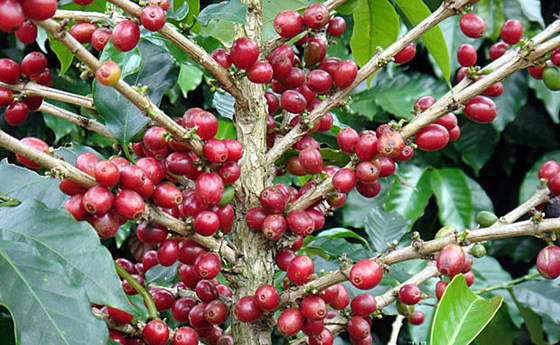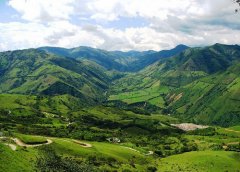Papua New Guinea Coffee beans Fine Coffee
Boutique coffee beans must be excellent varieties, such as the original bourbon species, mocha species and Tippica species. The coffee beans produced by these trees have unique aroma and flavor, which is far from that of other tree species, but the relative yield is low. in recent years, in order to pursue the ability of disease and insect resistance and increase the yield, there have been many improved tree species, such as Kenya to promote a large number of high-yield rurial11 species, but the taste and quality are greatly reduced. Of course, you can't call it "boutique coffee".
Papua New Guinea (Papua New Guinea) aroma 3.5 minutes brightness 3.5 minutes mellow 3.5 minutes flavor 4.5 points aftertaste 4 points
Suitable for baking: City/Full city New Guinea beans can be baked in a wide range, from soft and well-balanced city to full city with a well-balanced flavor, and even re-baking with oil, depending on your preference.
New Guinea is also an anomaly in Indonesian coffee. Coffee estates are numerous, large and small in scale, and most of the small estates produce washed organic beans with strong flavor but no local flavor. These small estates also produce a small amount of sun beans, which are more varied and delicate than water-washed beans; the taste of large manor coffee is more clean and delicate, but some people think that it has less personality. Basically, Babu coffee is lighter than java beans, somewhat similar to good Central American beans. Most of the coffee trees in the area come from the Tibica seed of the Jamaican Arabica bean, mixed with the Arabica bean from Tanzania. There are also some new hybrids or Indian Ken specialties.

Important Notice :
前街咖啡 FrontStreet Coffee has moved to new addredd:
FrontStreet Coffee Address: 315,Donghua East Road,GuangZhou
Tel:020 38364473
- Prev
Taiwan boutique coffee Taiwan flavor coffee
Boutique coffee (specialty coffee) is also called specialty coffee selection coffee. It refers to coffee made from a small number of raw beans with excellent taste grown in an ideal geographical environment. Depending on the special soil and climatic conditions in which they grow, they have outstanding flavor. After strict selection and classification, this kind of coffee is hard in texture, rich in taste and stylish.
- Next

Indian boutique coffee soft coffee beans
The best way to harvest high-quality coffee beans is to harvest them manually. That is, only mature coffee fruits are picked to prevent coffee fruits with inconsistent maturity from being picked at the same time. Because those unripe and overripe fruits will affect the balance and stability of coffee taste, boutique coffee needs to be picked frequently and carefully during harvest. India (India) aroma 3.5min brightness
Related
- Does Rose Summer choose Blue, Green or Red? Detailed explanation of Rose Summer Coffee plots and Classification in Panamanian Jade Manor
- What is the difference between the origin, producing area, processing plant, cooperative and manor of coffee beans?
- How fine does the espresso powder fit? how to grind the espresso?
- Sca coffee roasting degree color card coffee roasting degree 8 roasting color values what do you mean?
- The practice of lattes: how to make lattes at home
- Introduction to Indonesian Fine Coffee beans-- Java Coffee producing area of Indonesian Arabica Coffee
- How much will the flavor of light and medium roasted rose summer be expressed? What baking level is rose summer suitable for?
- Introduction to the characteristics of washing, sun-drying or wet-planing coffee commonly used in Mantenin, Indonesia
- Price characteristics of Arabica Coffee Bean Starbucks introduction to Manning Coffee Bean Taste producing area Variety Manor
- What is the authentic Yega flavor? What are the flavor characteristics of the really excellent Yejasuffi coffee beans?

